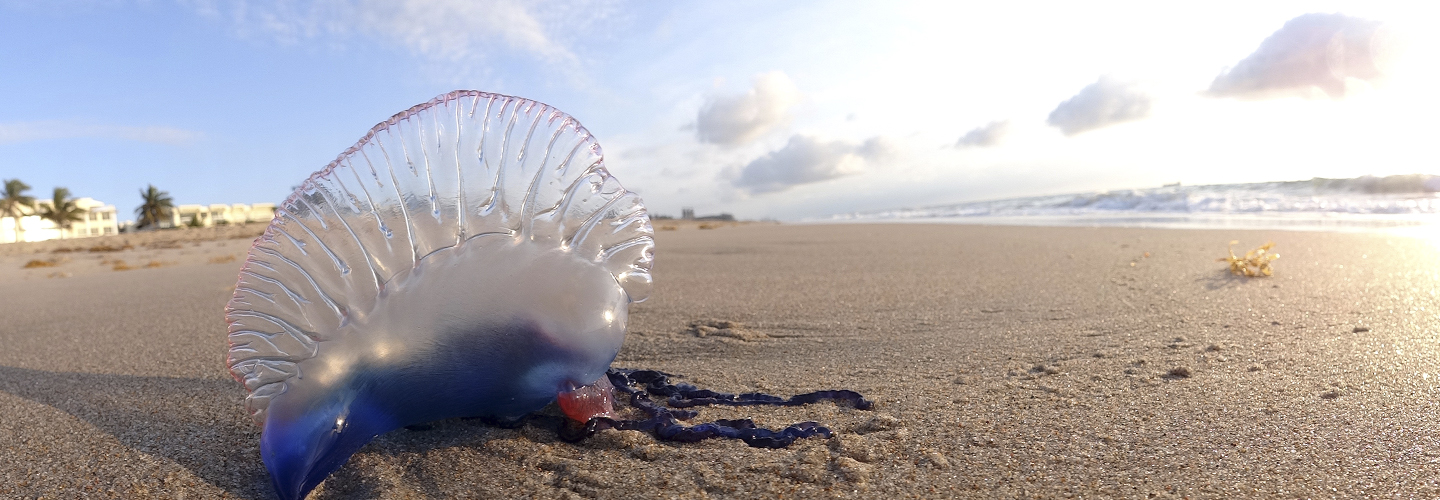The invasion of Portuguese Man O’Wars in the Valencian coast has caused a great deal of alarm. We asked Ainara Ballesteros, researcher at a reference center, the Institute of Marine Sciences (ICM-CSIC), to dispel our doubts. Ainara Ballesteros studied the Master’s Degree in Assessment and Environmental Monitoring of Marine and Coastal Ecosystems at the UPV.
This species is native to the Atlantic Ocean, so its presence in the Mediterranean Sea is dependent on weather conditions (winds, currents, etc.) that allow certain individuals to enter the Strait of Gibraltar. The Portuguese Man O’War cannot survive high-temperature waters, so the specimens present in the Mediterranean will die with the arrival of summer.
The sting of the Portuguese Man O’War is not deadly. The fact is that there are at-risk groups formed by people allergic to the toxin, people with heart disease and/or elderly or infants, where the sting can lead to complications that put their health at risk. In general, the sting of the Portuguese Man O’War does not lead to death, but causes severe pain to humans, leaving whip-like, red welts on the skin.
To treat the sting, the tentacles or fragments should immediately be removed without rubbing them, either using a credit card or tweezers. Next, the affected area should be flushed with plenty of sea water (never with vinegar or fresh water) and applied with “hot packs” or submerged in hot water for 15 minutes. Finally, if the pain persists, a doctor or health professional should be consulted
If you have any more questions, the ICM-CSIC has developed the iMedJelly mobile application, which gathers information about the main jellyfish species found on the Spanish coasts of the Mediterranean Sea and the first aid protocols for their stings. In addition, we put bathers in contact with experts in dermatology and toxicology at the Hospital Clínic de Barcelona for personalized monitoring of the stings, either in person or telematically.
Institute of Marine Sciences (ICM-CSIC)
Cover photo: Volkan Yuksel
